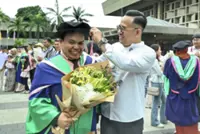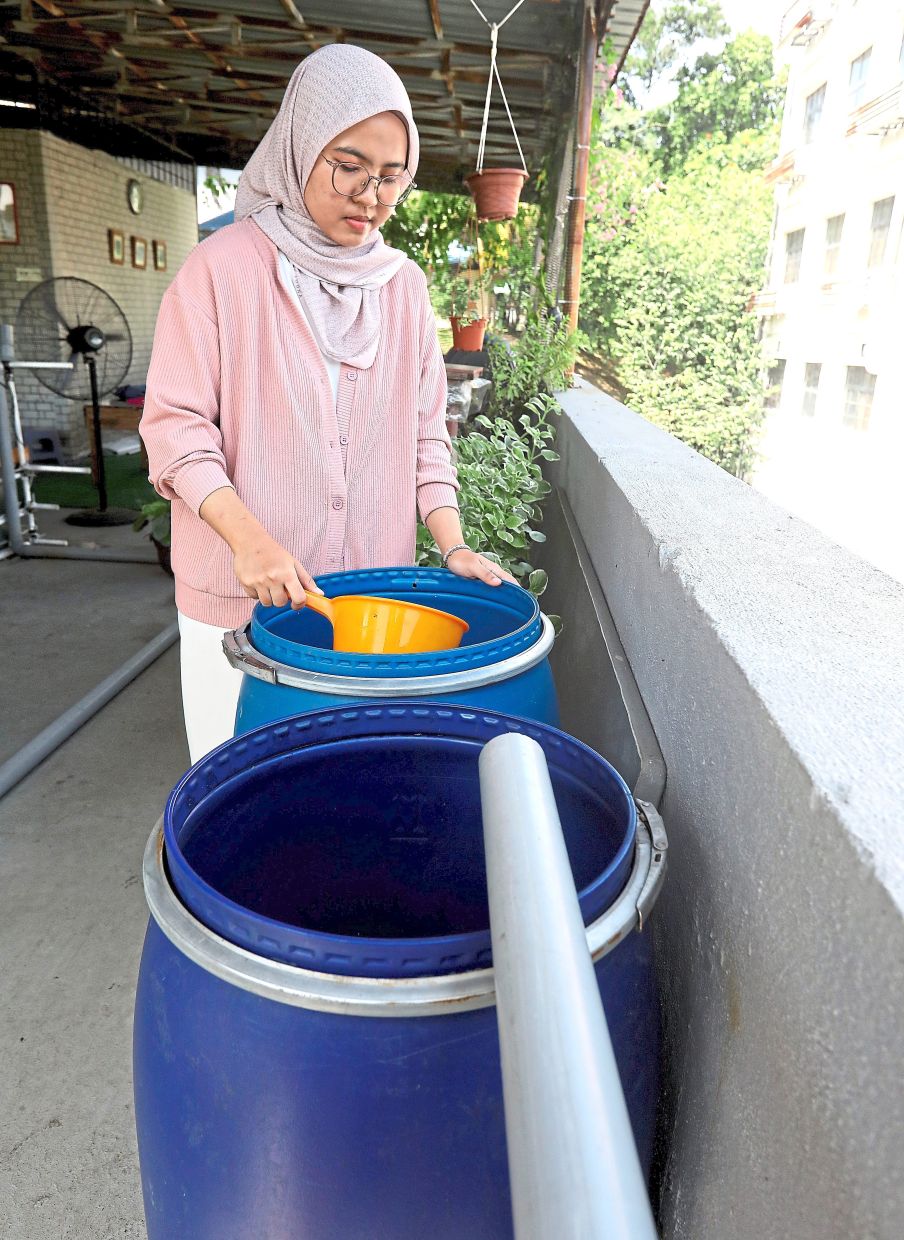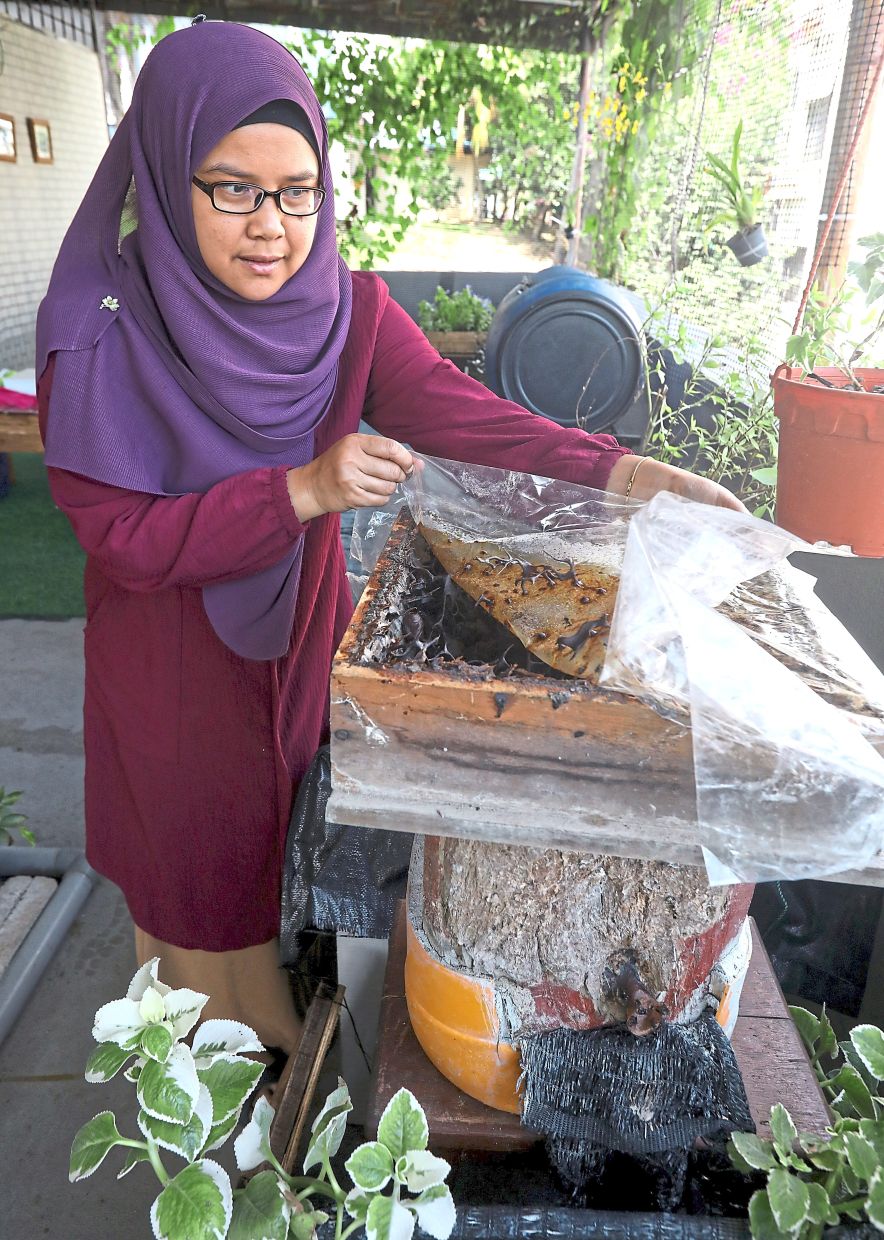UNIVERSITI Malaya senior lecturer Dr Fathiah Mohamed Zuki went up to the rooftop surau of her Chemical Engineering Department building one day last year and made a discovery.
She found that the rooftop had space the staff and students could make good use of.
With the temperature reading 42ºC at the time, the barren and hot area gave her an idea.
In her “Aha!” moment, she thought, why not turn the area into a farm with a thriving aquaponic system within an urban environment?
No other public university, she said, had a sustainable rooftop garden.
Fathiah became the project lead for what is now called the Smart Engineering and Sustainable Urban Farm at the campus in Kuala Lumpur.
Harmonious space
There is a sense of solace as one steps into the urban farm which has become a communal space for students and faculty members to destress among greenery comprising flowering creeping plants and herbs.
There is also the Healing Pod which Fathiah says, “allows students and anyone to destress with a game of darts or carom, or even just hang out for a meal”.
The cooling effect of the greenery also brings the temperature down.
The wooden tables and seats are made from recycled pallets. There is even a small trampoline.
One element that the aquaponic system contributes to is circular economics – the agriculture produce is sold to buy fish food and other essentials for planting.
Vegetables here include lettuce, spinach, water spinach, coriander, four-angled bean, bitter gourd, Mexican oregano, butterfly pea flower, figs and chillies.
There is even a stingless beehive to cultivate raw kelulut honey.
“I wanted to include the beehive to develop biodiversity,” Fathiah said.
“Because of the flowering plants, we have different bees and insects becoming our visitors as part of the ecosystem.”
At the heart of the urban farm lies a symbiotic relationship between fish and plants.
The aquaponics system, a sophisticated integration of aquaculture (fish farming) and hydroponics (plant cultivation without soil), leverages the natural energy between the two organisms.
The fish waste provides essential nutrients for plant growth, while plants help purify the water for the fish, creating a closed-loop ecosystem that minimises waste and maximises resource utilisation.
“By integrating aquaculture and hydroponics, we create a harmonious system that mimics natural ecosystems and minimise our environmental footprint,” she said.
The urban farm, she added, also exemplified a commitment to sustainability in every aspect of its design and operations, starting with its robust rainwater harvesting system that collects and filters rainwater, which minimises the impact on precious water resources.
A photovoltaic system above the garden harnesses the sun’s energy to power the entire urban farm, from operating pumps and lights to driving the automated systems.
Excess energy is fed back into the building’s grid, further reducing the project’s carbon footprint.
“Utilising renewable energy is essential for a truly sustainable future,” Fathiah said.
There is also an on-site composting system which processes organic waste from home and the aquaponic system.
The organic matter is then repurposed as nutrient-rich compost, enriching the soil and promoting plant growth while minimising waste disposal.
The urban farm’s “smart” capabilities are a testament to modern agriculture technology.
Fathiah said a network of sensors monitors critical parameters such as water temperature, PH levels and nutrient concentration in real-time.
“This data is transmitted to a central system that allows researchers and technicians to remotely monitor the urban farm’s health and make necessary adjustments.
“This enhances efficiency and also minimises manual labour, reducing the project’s reliance on human intervention.”Creating a living lab
Fathiah first set the wheels in motion for the project by applying for a Universiti Malaya Living Labs (UMLL) grant under the purview of Universiti Malaya Sustainability and Development Centre (UMSDC).
UMSDC is a hub for innovative solutions for a sustainable future, leveraging the campus as a living laboratory for creative experimentation and the promotion of a sustainable, carbon-neutral lifestyle and culture.
Initially launched in 2015, the “Living Lab” concept within the context of campus sustainability aimed to transform university campuses into dynamic laboratories where research capabilities are harnessed to address sustainability challenges and improve campus operations.
Fathiah’s proposal resulted in her winning the grant.
“Many others applied, but in less than six months after applying I was told I won the grant of RM30,000.”
Although Fathiah is currently on sabbatical, she goes to the campus to teach the topic of Sustainable Development in Engineering when needed.
“What I teach can be applied in the urban farm, where my chemical engineering students have the opportunity to do their practical work,” she said.
Fathiah acknowledged that she could not have implemented the urban farm project without support from project assistants, students and department staff.
Some of her final year students leveraged on the farm’s sustainable capabilities to carry out their final year projects.
Chemical engineering graduate Amir Zhafran Abdullah Sani, 24, was Fathiah’s assistant for his final year project.
“The challenge was finding the right topic. Fortunately, Dr Fathiah offered an idea of the aquaponic system in increasing sustainability at the faculty.
“I was new to aquaponics and had no knowledge of system design.
“I resolved this by contacting aquaponic farmers to build an efficient system,” he said.
Other final year students Siti Nurmaisara Abdul Halim, Mohamad Nur Aidil Mohd Isa and Yap Jian Yong, all 23, had a hand in building the portable aquaponic system.
“It is a small scale, portable aquaponic system that is part of our sustainability course,” said Siti Nurmaisara.
Mohamad Nur Aidil said they used detachable and easy-to-assemble pipes.
Yap said sustainability was an important part of building the portable version – taking into account use of sustainable resources and space limitations.
To fulfil his Masters in Safety Health and Environment Engineering research project, Low Jian-Yuan, 27, focused on the urban rooftop farming system in relation to occupational health, incorporating green spaces in city areas.
His research posits that sustainable development encompasses three main aspects – social, economic and environmental sustainability.
“In terms of social sustainability, the Healing Pod aims to help students destress and take their mental health seriously.
“During rainy days, the cool fresh air is soothing.
“Environment sustainability is how we learn to produce low temperatures and increase comfort,” said Low, adding that they used recycled water in the filtration system.
As for economic sustainability, Low cited the circular economics concept for both fish and vegetables.
“Even the honey from the stingless beehive can be sold if we visualise this on a bigger scale, which can be used to sustain the project,” he said.











